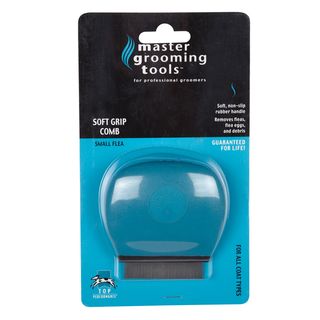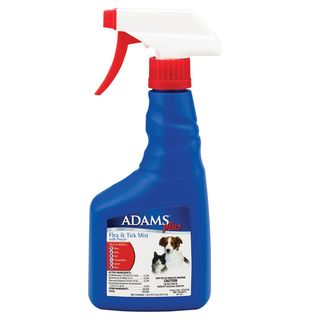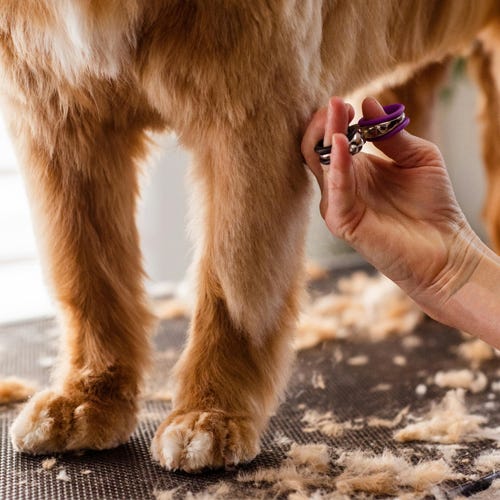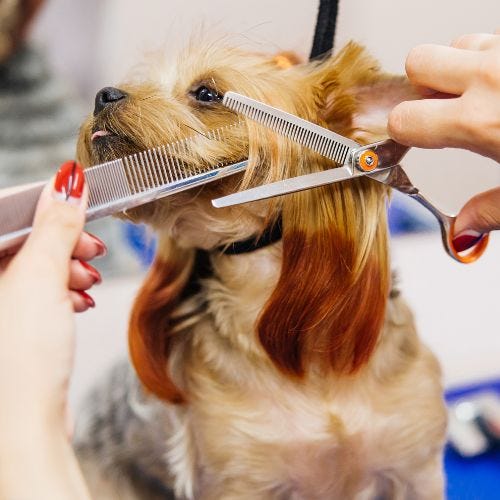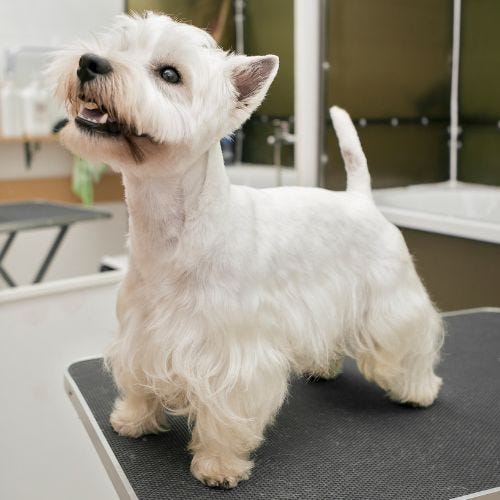PetEdge Grooming Blog: Our Four-Point Plan for Getting Fleas to Scram
03/21/2012
Due to the mild winter weather and the unseasonably warm spring, the fleas never really went away this year—at least here at the PetEdge home offices in New England.
But no matter where you're located, if the weather is warming up, it's time to start thinking about flea protection again.
Whether you are a groomer, a pet care professional, kennel owner or a homeowner, fleas can be a big headache. Once they get a foothold (or in the case of fleas, six tiny feetholds) in your home or business it's tough to get rid of them.
Oftentimes you'll think you have fleas on the run only to see them reappear again a few days or weeks later.
Here's our plan for identifying flea infestations, getting rid of these problem pests, and making sure they don't come back.
Even if you don't see fleas flitting about on the back of a dog or cat's coat, that doesn't mean they aren't a problem. Fleas only stay on the dog for as long as it takes to feed. Once they're done, they hop off and hide somewhere else until it's time to feed again.
To check for fleas on the coat, take a flea comb or a fine-toothed face & finishing comb and comb the fur along the hair shaft. Your best bet is to comb in high flea traffic areas such as the base of the ears, the belly, armpits, around the ears, the base of the tail or the groin.
If you don't see actual fleas when you run the comb through the coat, there may still be evidence of an infestation in the form of flea debris. How can you tell flea debris from regular dirt?
Wipe the comb with a damp paper towel once it's been through the coat. If the paper towel turns red, that's evidence of dried blood—the byproduct of fleas feeding on the pet.
Once you have identified an infestation, it's time to start treatment.
At PetEdge, we recommend a four-point plan for attacking a flea infestation. Our plan includes getting rid of the fleas on the pet, getting rid of fleas in the home, preventing the fleas from returning to the pet, and doubling back to make sure that any fleas that escaped the first time around get eliminated in round 2.
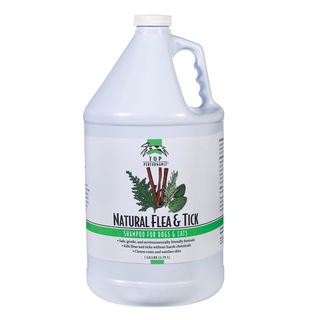 1. Treat the Infestation on the Pet
1. Treat the Infestation on the Pet
The first step in treating a flea problem is to attack the fleas at the source of the infestation. When using a flea shampoo or a spray to eliminate fleas from a pet's coat, it's important to saturate the coat to ensure that the flea-eliminating agents reach all the way down to the skin.
Also, be sure to start from the back of the pet—where the fur is usually the thickest—and work your way to the front, where the coat is thinner. This makes it harder for the fleas to run and hide.
Be aware that some chemical pesticides are designed to cause an overstimulation of the flea's nervous system, which may temporarily make fleas more active, and in turn make the infestation seem like it's worse than before. If those fleas are jumping around like crazy, they are most likely reacting to the pesticide.
Before allowing a newly flea-free pet back into the home, we recommend treating the home itself with a flea spray or fogger that contains an insect growth regulator (IGR). Spray any carpets, around the baseboards, into any gaps in flooring, and any area or throw rugs. Fleas can hop rides on pant legs, shoes and all kinds of things—so the more areas you treat, the better.
The spray or fogger will eliminate any fleas that are hiding in the corners, crevices and carpets of the home. Plus, the insect growth regulator in the spray will prevent any flea eggs from hatching. Common trade names for chemical IGRs include Methoprene, Nylar and Precor. Another clue that the product contains and IGR is that the label says "interrupts the flea life cycle."
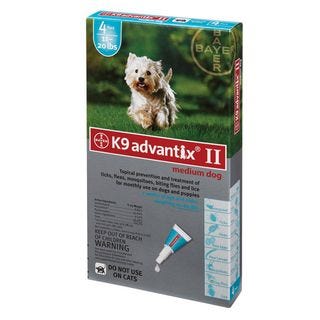
3. Give the Pet A Preventative Treatment
To discourage fleas from reinfesting your pet, use a topical treatment, a flea repellent spray, or a flea collar to act as a flea preventative. Some of the flea preventatives that we recommend to customers include:
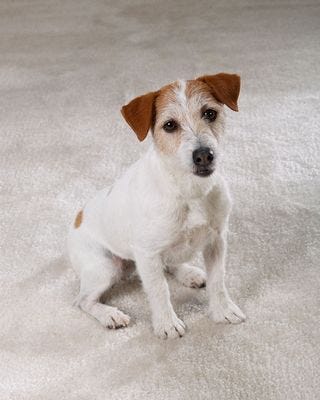
4. Retreat the Home in Exactly 14 Days
Retreating the premises after two weeks will ensure that any remaining fleas are eliminated from the home. This will take care of any fleas that were in the pupae stage during the first treatment.
When they're in the pupae stage, fleas have a hard exoskeleton that insecticides can't penetrate. Any flea pupas that are present during the initial treatment are thus likely to survive this step.
It takes pupae 12-14 days to hatch, and after hatching it is only 24 to 48 hours before the fleas reach full maturity and start laying eggs, so it's important to retreat the area at exactly 14 days to prevent a new infestation from starting.
As a cost-saving measure, the second flea treatment does not have to be with a formula that contains an insect growth regular, as growth regulator compounds will last up to seven months once applied.
Botanical Alternatives:
If you'd prefer to attack fleas with a non-chemcial solution, there are some botanical products that have natural insecticide properties and are effective at eliminating fleas.
Look for products that contain all or some of the following products: cedar oil, peppermint oil, clove oil, eugenol (a secondary form of clove oil), rosemary oil and cinnamon oil.
These botanical essences act to disrupt the transmission of octopamine, a neutransmitter that invertebrates like fleas and ticks need to survive. When the octopamine receptors no longer function correctly, the flea will die.
Natural alternatives that take advantage of botanical essences include our Top Performance Natural Flea and Tick Shampoos and Sprays, and Sentry Natural Defense Squeeze On and Spray Treatments.
Your Turn:
Do you have a story about fleas that you've been itching to share with us? Post them on our Facebook Wall, leave a comment on our blog, or email them to blog@petedge.com.
Thanks and happy grooming :)

